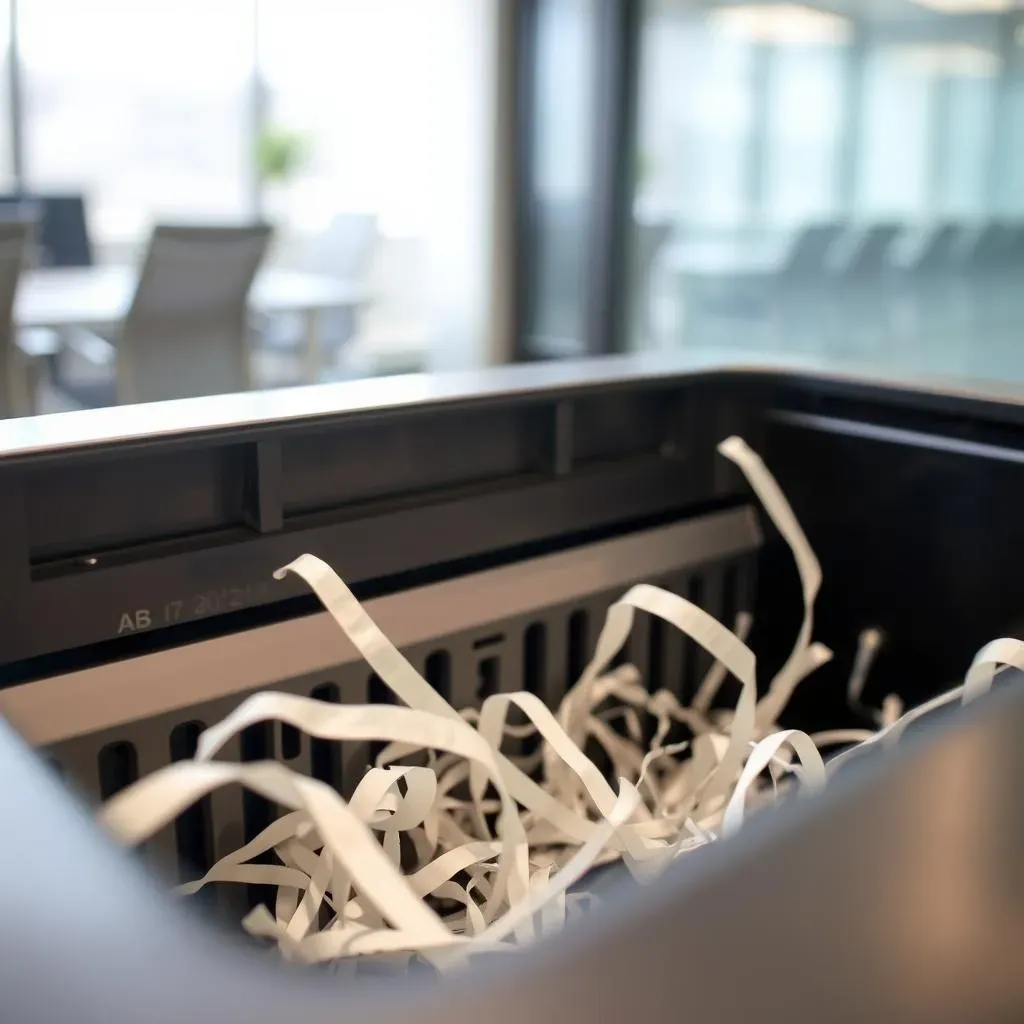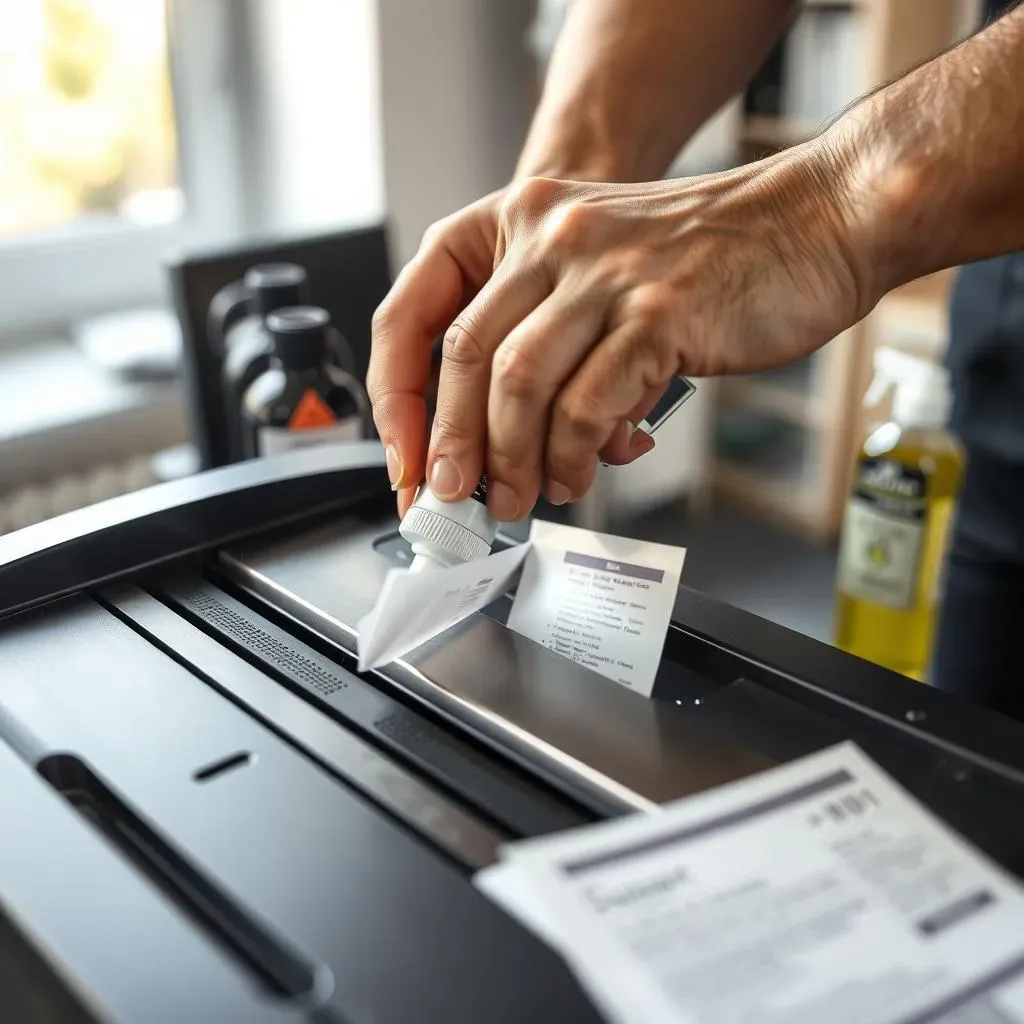Table of Contents
Have you ever wondered, "Should paper shredders be lubricated?" It's a question many people have, and the answer is more complex than a simple yes or no. This article will equip you with the knowledge to keep your shredder humming along, avoiding frustrating jams and costly repairs. We'll explore the crucial role lubrication plays in maintaining your shredder's efficiency and longevity. You'll discover the best types of lubricants to use, avoiding common pitfalls like using inappropriate oils that could damage your machine. We'll also cover different methods for oiling your shredder, providing clear, step-by-step instructions to ensure a smooth and safe process. Finally, we'll tackle common problems and offer simple solutions, helping you troubleshoot minor issues before they escalate. By the end of this article, you'll be a paper shredder lubrication expert, capable of keeping your machine running at peak performance for years to come. So, let's dive in and answer the question: should paper shredders be lubricated? The answer, as you'll see, is a resounding yes—but with the right approach.
The Importance of Paper Shredder Lubrication
The Importance of Paper Shredder Lubrication
Think of your paper shredder as a tiny, tireless machine, constantly chomping through paper. Just like a well-oiled bicycle chain runs smoothly, a lubricated shredder operates efficiently and quietly. Without regular lubrication, the cutting mechanism faces friction, leading to several problems. The blades can become dull faster, resulting in poor shredding quality and potentially even causing paper jams. Additionally, the increased friction generates heat, which can damage the motor and other components. In extreme cases, this overheating can even present a fire hazard. Regular lubrication isn't just about preventing breakdowns; it's about preserving the life of your shredder and ensuring it continues to perform its vital task efficiently. Consider it an investment in both your document security and your budget. A little preventative maintenance goes a long way!
Imagine trying to cut paper with scissors that are completely dry and stiff. That's what it's like for your shredder's blades without lubrication. The friction creates resistance, making the shredding process slower and more strenuous on the machine. This leads to unnecessary wear and tear, shortening the lifespan of your shredder. Regular lubrication acts as a buffer, reducing friction and allowing the blades to glide smoothly through the paper. This minimizes wear and tear, extending the life of your shredder and saving you money on replacements. Want to know how to choose the right paper for your cutting projects? Check out our guide on choosing the right paper.
Problem | Cause | Solution |
|---|---|---|
Slow shredding speed | Lack of lubrication, dull blades | Lubricate regularly, consider blade sharpening (if possible) |
Paper jams | Friction, build-up of paper dust | Lubricate, clean regularly |
Overheating | Excessive friction | Lubricate, allow for cooling periods between intensive use |
Regular maintenance is crucial. Just like you wouldn't ignore a squeaky hinge on a door, you shouldn't ignore the signs of a struggling shredder. By proactively lubricating your shredder, you're investing in its long-term health. Think of it as a simple act that prevents costly repairs and keeps your confidential documents securely shredded. Find out more about paper cutting safety with our ultimate guide on paper cutter safety.
The benefits of lubrication extend beyond just preventing mechanical issues. A well-lubricated shredder is also a quieter shredder. The reduced friction means less noise pollution in your workspace. This makes it a more pleasant experience for you and those around you. A quiet shredder is a happy shredder! And a happy shredder is a productive shredder. Learning about the different types of paper cutters can be really interesting! For example, did you know about Swingline Paper Cutter 9312?
- Improved shredding performance
- Extended shredder lifespan
- Reduced noise levels
- Prevention of overheating and fire hazards
Choosing the Right Lubricant and Oiling Methods
Choosing the Right Lubricant and Oiling Methods
Choosing the Right Lubricant
So, you're ready to oil your shredder? Fantastic! But hold your horses – not all lubricants are created equal. Using the wrong oil can be worse than using no oil at all. It can gum up the works, attract more dust, and even damage sensitive components. Forget that old 3-in-1 oil you have lying around; it's not suitable for the precision mechanisms inside your shredder. Instead, look for a lubricant specifically designed for paper shredders. These are usually silicone-based and won't leave behind sticky residues. Many shredder manufacturers sell their own branded oil, which is a safe bet. It's worth checking your shredder's manual for recommendations. Using the wrong oil could void your warranty, so it's definitely worth paying attention to this step!
Seriously, don't use WD-40! I know it's tempting, it's everywhere, but it's not designed for this purpose. It can leave behind a sticky residue that will actually *attract* more dust and debris, leading to more problems down the line. Trust me, it's not worth the risk. Stick to a purpose-made lubricant, and your shredder will thank you for it. Need help making intricate paper cuts? Check out our guide on paper cutting tutorials for beginners!
- Shredder-specific oil (manufacturer recommended)
- Silicone-based lubricants
- Avoid WD-40 and other general-purpose lubricants
Oiling Methods: Direct and Indirect
There are two main ways to lubricate your shredder: the direct method and the indirect method (using lubricant sheets). The direct method involves carefully applying oil directly to the cutting blades, usually while the shredder is running in reverse. Consult your shredder's manual for precise instructions; improper application can lead to a mess and potential damage. This method is best for more powerful shredders or those showing clear signs of friction and stiffness.
The indirect method is safer and often preferred for less powerful shredders. It involves using special lubricant sheets designed to be fed through the shredder. The oil is absorbed into the paper, then distributed throughout the cutting mechanism as the paper is shredded. This method is less messy and often easier, especially for beginners. It's also a good option for regular maintenance, even if your shredder isn't showing any obvious signs of needing lubrication. For inspiration, check out our amazing paper cutting decorations ideas!
Method | Pros | Cons |
|---|---|---|
Direct Application | More effective for severe dryness | Messy, requires precise application |
Lubricant Sheets | Clean, easy to use | May not be as effective for heavily used shredders |
Maintenance Tips and Troubleshooting Common Problems
Maintenance Tips and Troubleshooting Common Problems
Regular Cleaning
Keeping your shredder clean is just as important as lubricating it. Paper dust and small pieces of paper can accumulate inside the machine, hindering its performance and potentially causing jams. Regularly empty the waste bin, and occasionally use a brush or compressed air to remove any debris from the cutting chamber. A clean shredder is a happy shredder! Don't forget to check the manual for specific cleaning instructions for your model.
Think of it like this: would you expect your kitchen blender to work efficiently if you never cleaned it? Probably not. The same principle applies to your paper shredder. Regular cleaning prevents build-up, ensuring smooth operation and preventing unnecessary wear and tear. For more creative paper cutting ideas, check out our easy creative ideas!
- Empty the waste bin frequently
- Use a brush or compressed air to remove debris
- Consult your shredder's manual for specific cleaning instructions
Troubleshooting Common Issues
Even with regular maintenance, you might encounter some problems. A common issue is paper jams. These are usually caused by overloading the shredder, using the wrong type of paper, or a build-up of debris. If you experience a jam, turn off the shredder, and carefully remove the jammed paper. Never force the paper; you could damage the mechanism. If jams become frequent, it's a sign you need to clean and lubricate your shredder more often.
Another common problem is slow shredding speed. This could indicate dull blades or a lack of lubrication. Try lubricating the shredder first; if the problem persists, the blades might need professional attention (although blade sharpening isn't always possible). Regular maintenance can help prevent these issues. Learn more about the science behind cutting paper with our article on how cutting paper is a physical change.
Problem | Possible Cause | Solution |
|---|---|---|
Paper Jams | Overloading, wrong paper type, debris | Remove jammed paper, clean and lubricate |
Slow Shredding | Dull blades, lack of lubrication | Lubricate, consider professional blade sharpening |
Unusual Noises | Loose parts, debris | Check for loose parts, clean thoroughly |
Preventive Maintenance is Key
The best way to deal with shredder problems is to prevent them in the first place. Regular lubrication and cleaning are crucial. Think of it as a preventative health check for your machine. It's far better to spend a few minutes on regular maintenance than to face a costly repair or replacement later. A little care goes a long way in extending the life of your shredder. Remember to always consult your shredder’s manual for specific instructions and recommendations.
Also, avoid shredding materials that are not intended for your shredder. This includes staples, paper clips, and other hard objects. These can damage the blades and other internal components. By following these simple tips, you can keep your shredder running smoothly and efficiently for many years. If you're interested in paper cutting art, check out our free paper cutting templates!
- Regular lubrication
- Frequent cleaning
- Avoid shredding unsuitable materials
- Consult your manual for specific instructions